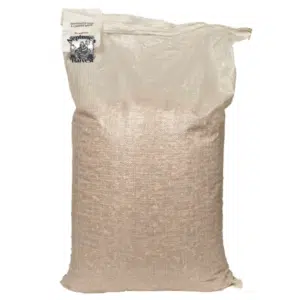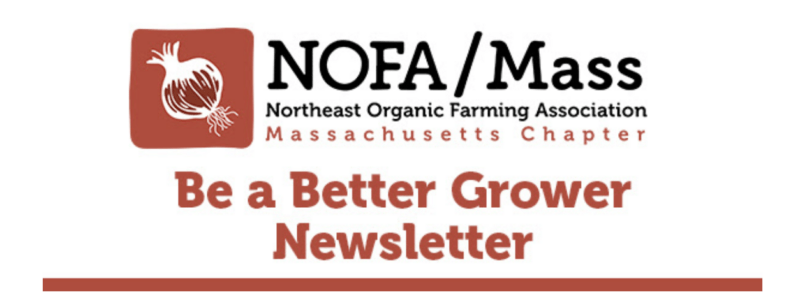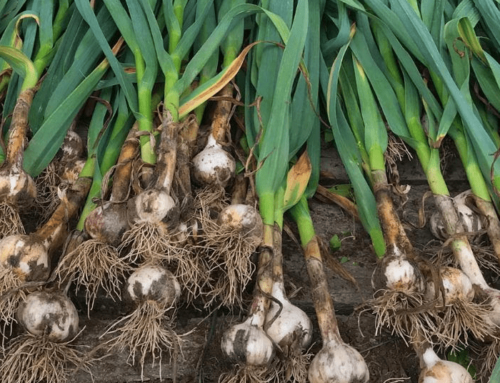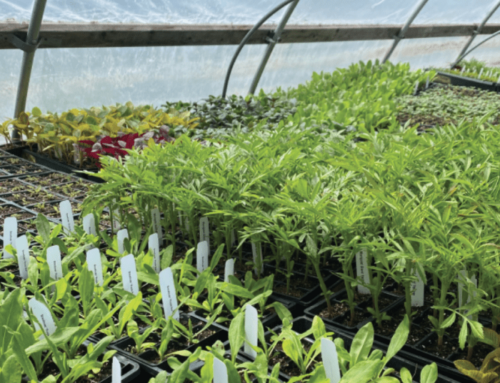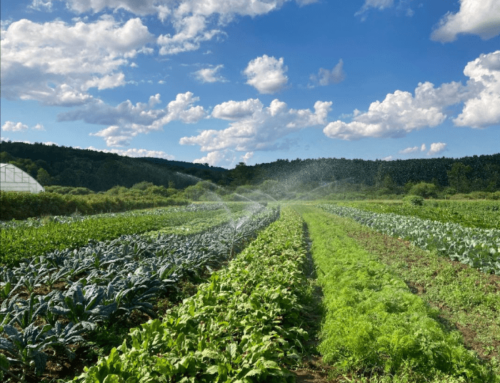By Rubén Parrilla
In this month’s Be a Better Grower newsletter, our Soil Health Team walks you through the benefits of one of their favorite products in the 2024 Tri-State Bulk Order.
The Bulk Order is open now through January 31st, 2024 – check it out now and get your orders in early!
As our Education Director Ruben Parrilla says, the Tri-State Bulk Order isn’t just about getting organic products at great prices (although you certainly will when you order!); “it’s about empowering you as a grower.”
To that end, Ruben explains below how to use one of the products available through the bulk order, and highlights a few upcoming NOFA/Mass events where you can learn more about using organic soil amendments to promote a healthy microbial community on your farm and garden.
Read on for an insider’s look at a simple yet potent biostimulant recipe – your garden is about to thank you!
We are thrilled to unveil our annual Tri-State Bulk Order this year by shining light on a particular product, Lobster and Crab Shell Flour, and explaining why it’s helpful during an especially rainy season.
Wondering how this simple ingredient, considered a waste byproduct of the fishing industry, can have a substantial impact on your garden? The answer is chitin!
Well, to be more specific – chitin that has been converted by the enzyme chitinase into a powerful biostimulant and protector against pathogens.
Chitin is a “major component of fungal pathogens, insect pests, and nematode eggshells,” and exposing the chitin in those organisms to chitinase may result in “significant and detrimental changes” to the chitin’s structure, harming the organisms.¹
If you all remember the amount of precipitation we received during our last growing season here in the Northeast, you’ll understand how the conditions were ripe for fungal pathogens and pests to flourish in our region. But if we manage the ecology of our soils – for example, with this on-farm biostimulant recipe below – we can help plants grow in a healthier environment even when conditions are working against them.
So, how do you convert the chitin in Lobster & Crab Shell flour with chitinase? If you’ve been following our work here at NOFA/Mass, then you’ll know that we’re microbephiles (ok, yes, I completely made that word up) and you’ll know that we need – you guessed it – microbes (in the form of fermented whey bacteria) to break down this chitin for us.
Our recipe is below. This is a basic method/recipe of making chitinase; there are many ways to do this, and we are here to help you experiment and guide you through the process that works best for you!
Making Chitinase
Materials Needed
- Approx. 1.3 lbs. (0.59 kg) Crab and lobster shell flour
- Muslin bag or equivalent (a bulk coffee filter bag or even an old cotton pillowcase could work)
- 9oz (266 mL) organic Blackstrap Unsulfured Molasses
- 2.65 gal (2 gallons plus 10.5 cups, or 10L) organic whey to use as an inoculum – or See how to make your own microbial inoculum using organic rice, milk, and molasses.
- 5 gal food grade plastic drum/container
Note: For a larger scale operation, you can increase this recipe to use: 22lbs (10kg) crab and lobster shell flour; 1.3 gal (5L) molasses, and 45 gal (170L) whey (or follow the instructions in step 7 here to increase the inoculum equivalent), and mix in a 55 gal plastic food grade drum.
Steps:
-
Add Crab and Lobster Shell flour to your porous bag of choice.
-
In the plastic drum, dissolve the molasses into the whey or inoculum mix.
-
Add the bag with the flour mixture to the drum, massaging into the molasses/whey mixture (keeping the bag closed as you do so) and thoroughly saturating the bag contents. Use a rock or any inert material to weigh the bag down; it needs to be submerged throughout the fermentation process.
-
Put the lid on loosely and leave to ferment for 30 days.
Application Rates:
After fermentation, this can be applied at a rate of 1 – 2 gal per 26 gal of water or 3-7L per 100L of water. It can be applied both as a foliar spray and as a soil drench.
As with any biostimulant, the rate of application is context dependent and we believe in you as the farmer, gardener, and homesteader to determine this. You are smart and capable of taking control of your inputs so that you can be on the path to sovereignty. Experiment with this recipe, and remember – as with any input, the important factor is not quantities but greater diversity at smaller rates; this recipe should be part of your toolbox to increase your input diversity.
Substitutions:
The biological ingredient being used in this recipe is whey. There are different ways to obtain the necessary biology for the chitin/chitinase conversion:
-
A recipe for an equivalent inoculum mix is linked above.
-
You can also purchase a product such as EM1 or equivalent that is known to contain Bacillus sp. It can be multiplied to the volume needed; instructions are on the label.
The shells of all crustaceans contain chitin and can easily be subbed in place of the crab/lobster shell flour used here.
Keep an eye out for these upcoming events
Compost Tea Mastery Workshop
April 2024
Uncover the secrets of cultivating thriving soil. We’ll guide you through the art of creating Actively Aerated Compost Tea, a potent elixir for your garden. Key ingredients like alfalfa meal, fish hydrolysate, blackstrap unsulfured molasses, kelp meal, rock powder, and our specially designed brewer will be explored – and are also available through our Bulk Order. Participants will not only understand the science behind each component but also gain hands-on experience in crafting this powerful “potion”. Don’t miss this opportunity to elevate your gardening skills and cultivate a robust, living soil ecosystem.
Harvest to Hibernate: A Workshop on Closing the Garden/Farm and Harnessing Saprophytic Magic
October 2024
Dive deeper into the realm of microbial ecosystems. Discover the transformative role of microbial inoculums and energy sources that assist in breaking down organic matter, preparing your garden for a rejuvenating rest. The products (AEA’s Rejuvenate™, Seashield™ and Spectrum™) highlighted during this event are available through the bulk order. This workshop focuses on simplicity, emphasizing how easy it is to introduce beneficial microbes into your soil. Learn about the essential ingredient, microbial inoculum, and witness the profound impact it can have on overall soil health.As we unveil the wonders of Lobster and Crab Shell Flour and guide you through creating a powerful biostimulant, we invite you to delve deeper into the world of gardening excellence. Our annual Tri-State Bulk Order event offers access to these transformative products, ensuring your garden’s success. Try the biostimulant recipe at home, sign up for our workshops to expand your knowledge, and secure the essential materials through our limited-time bulk order program. This is your chance to be a better grower, nurturing a garden that thrives with vitality and resilience. Embrace the journey of growth with us!
We enthusiastically invite you to:
-
Try your hand at creating the biostimulant recipe using Lobster and Crab Shell Flour. Share your experiences with us!
-
Elevate your gardening skills by enrolling in our workshops. Gain practical knowledge and hands-on experience in creating powerful soil amendments.
-
Take advantage of our exclusive Bulk Order program. Ensure you have the essential materials to enhance your garden’s health and productivity. Don’t miss out!

